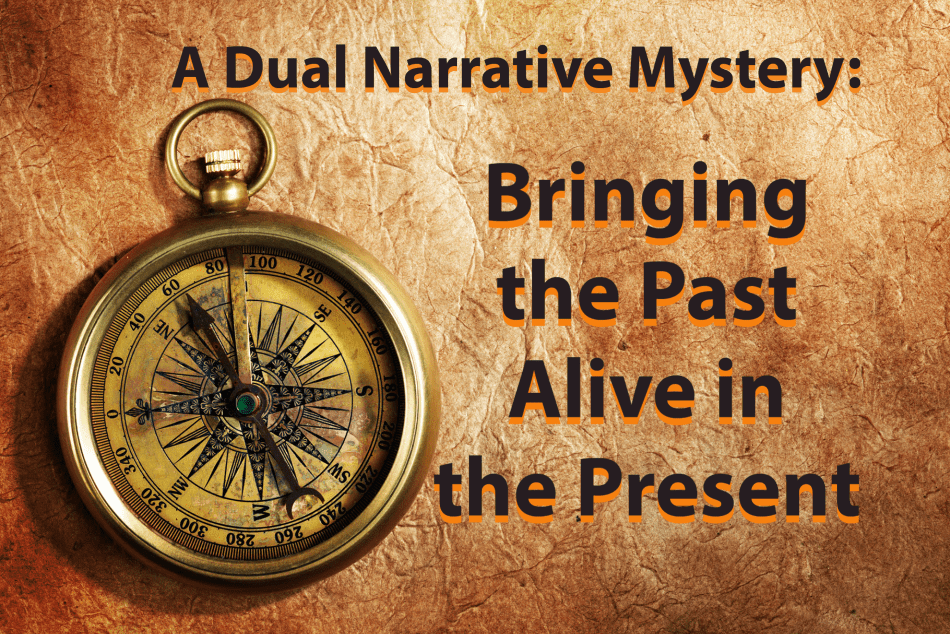By Patricia Crisafulli
For writers, it’s both fascinating and inspirational that the artifacts surrounding us—the exquisite and commonplace, alike—contain stories of the people whose lives they have passed through over the years. We sense these narratives with our eyes, but our emotions also help us intuit their meaning.
I experienced this a few years ago in the lobby of the Morgan Library in New York City. While on a business trip with a bit of extra time on my hands, I ducked into the museum to see an Emily Dickinson exhibition. On my way out, I paused to put on my coat next to a display case without paying any attention to what was inside. Then I saw the gleam of old silver and rich blues and greens that caught the light.
Inside that case was a fourteenth century chalice from Siena, Italy, its base depicting images of saints—tiny portraits created in layers of colored enamel. In that moment, I could almost hear it whisper, “I’m what you have been looking for.”
That old chalice—or more to the point, the basse-taille technique used to produce its rich and colorful images—inspired the creation of a fictional artifact featured in my first novel, The Secrets of Ohnita Harbor (Woodhall Press, 2022), the book which launched my Ohnita Harbor Mystery Series. In that novel, the artifact is a small medieval cross with a provenance (spoiler alert!) that connects it to Catherine of Siena, a fourteenth century woman well ahead of her time.
In imagining that old cross, I drew not only on what I learned about the enameling technique, but also the emotional pull I felt that day in the Morgan Library—from awe and reverence to desire and acquisitiveness. These same emotions are at the center of a dual narrative in my mystery novel, which begins with the discovery of a small cross in a box of donations to a rummage sale fundraiser for the local library.
My protagonist, Gabriela—a weary, overworked librarian—sees the cross and dismisses it at first as a “museum shop tchotchke.” But on second glance, it’s clearly so much more. The cross inserts itself into a present-day narrative as if wanting to be discovered—to have its story understood and told. Indeed, it seems to catalyze events that lead to murder and intrigue, including an unexplained death and a bludgeoned body found on the library lawn. While trying to solve the mystery of the cross—its origin, value, and how it ended up at the rummage sale—my protagonist Gabriela finds herself in the crosshairs of someone determined to put a deadly end to her snooping.
Linking past and present requires quite a bit of research—and frankly, it’s one of my most favorite parts of the creative process. In my second novel, The Secrets of Still Waters Chasm, the artifact is nautical in nature—an early nineteenth century drawing that turns out to be only a hint of what lies in the depths of remote lake threatened by environmental disaster.
Bringing together fact and fiction presents a “what if” scenario that keeps the mystery moving on many levels.
Here are a few rules from this road I’ve been happily traveling:
- Choose an object that intrigues and delights. Here, I rely totally on my own eclectic taste. I adore medieval art so creating the cross for the first novel was easy. Ditto the schematic for the second book, since I love old maps and documents. Once I chose my object, I needed to figure out how it could have ended up in Ohnita Harbor—and that takes us to the second step.
- Find a real historic person who connects the artifact and its setting. I’m fortunate to tap a rich history in and around the fictional Ohnita Harbor, which is based on my hometown of Oswego, New York. Many historic people—from Napoleon’s brother to industrialist J.P. Morgan—had at least a tangential connection to the place. Weaving these historic people into the narrative heightens the interest and increases the plausibility. Then it’s time for the third step.
- Let the artifact speak. Just as I “hear” my characters in my mind, the artifact itself will unfold its story. Each time I ask myself, “How could this object end up here?” I search for real clues in history that add to plausibility while enhancing the mystery. And I’m always surprised by what I discover.
The past is all around us, especially in the things we revere and treasure. They are not inanimate objects, but artifacts imbued with life—sparking the imaginations of writers like you and me.
Are there physical objects that inspire your writing? If not, what does? Share with us on Facebook.

 Patricia Crisafulli is an award-winning fiction writer and a New York Times bestselling author. Her first novel, The Secrets of Ohnita Harbor, launched the Ohnita Harbor Mystery Series. Her second novel in the series, The Secrets of Still Waters Chasm (Woodhall Press, 2023), will be published in September and is now available for pre-order. Tricia is also the founder of www.FaithHopeandFiction.com.
Patricia Crisafulli is an award-winning fiction writer and a New York Times bestselling author. Her first novel, The Secrets of Ohnita Harbor, launched the Ohnita Harbor Mystery Series. Her second novel in the series, The Secrets of Still Waters Chasm (Woodhall Press, 2023), will be published in September and is now available for pre-order. Tricia is also the founder of www.FaithHopeandFiction.com.





